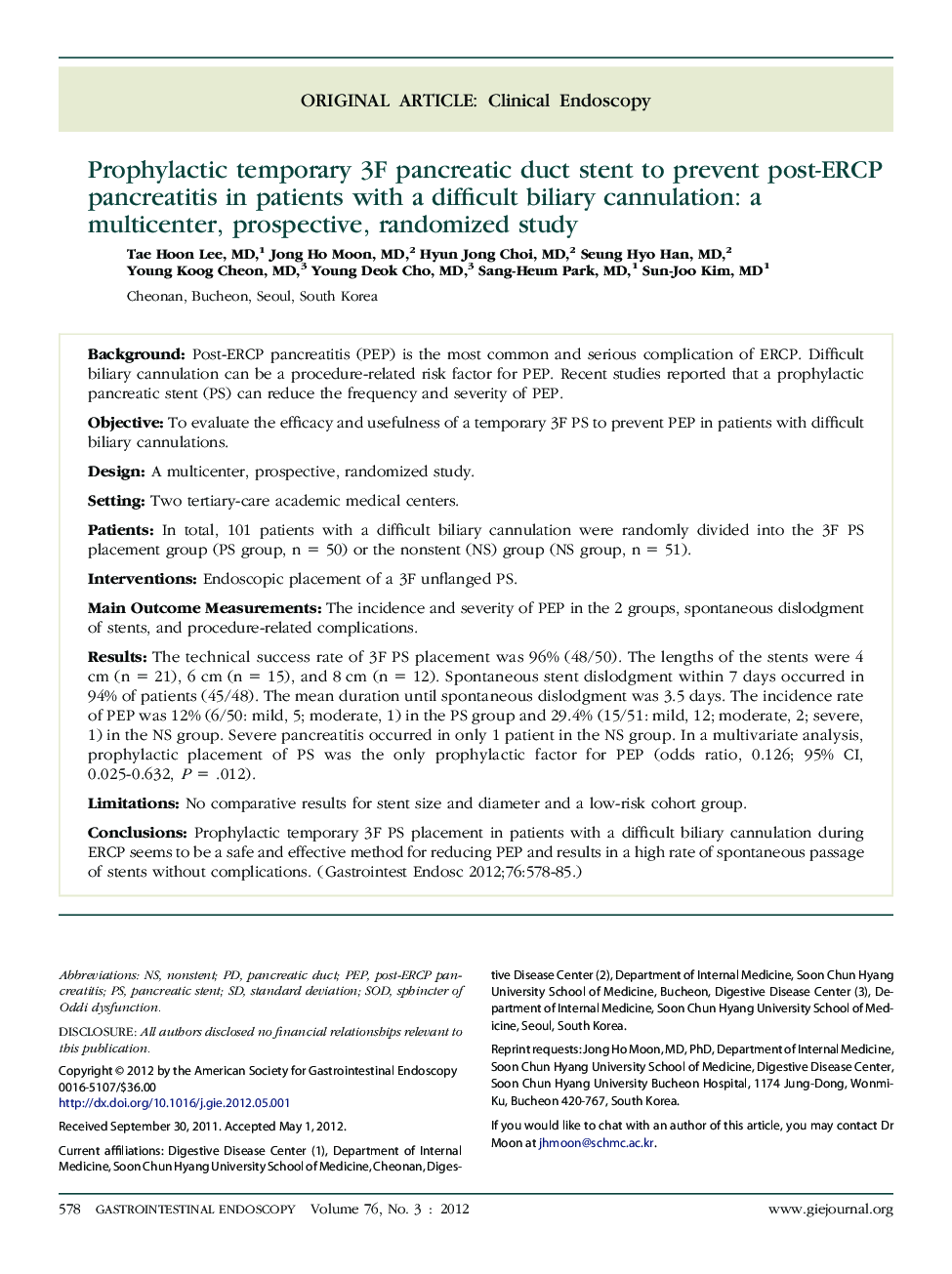| Article ID | Journal | Published Year | Pages | File Type |
|---|---|---|---|---|
| 3303688 | Gastrointestinal Endoscopy | 2012 | 8 Pages |
BackgroundPost-ERCP pancreatitis (PEP) is the most common and serious complication of ERCP. Difficult biliary cannulation can be a procedure-related risk factor for PEP. Recent studies reported that a prophylactic pancreatic stent (PS) can reduce the frequency and severity of PEP.ObjectiveTo evaluate the efficacy and usefulness of a temporary 3F PS to prevent PEP in patients with difficult biliary cannulations.DesignA multicenter, prospective, randomized study.SettingTwo tertiary-care academic medical centers.PatientsIn total, 101 patients with a difficult biliary cannulation were randomly divided into the 3F PS placement group (PS group, n = 50) or the nonstent (NS) group (NS group, n = 51).InterventionsEndoscopic placement of a 3F unflanged PS.Main Outcome MeasurementsThe incidence and severity of PEP in the 2 groups, spontaneous dislodgment of stents, and procedure-related complications.ResultsThe technical success rate of 3F PS placement was 96% (48/50). The lengths of the stents were 4 cm (n = 21), 6 cm (n = 15), and 8 cm (n = 12). Spontaneous stent dislodgment within 7 days occurred in 94% of patients (45/48). The mean duration until spontaneous dislodgment was 3.5 days. The incidence rate of PEP was 12% (6/50: mild, 5; moderate, 1) in the PS group and 29.4% (15/51: mild, 12; moderate, 2; severe, 1) in the NS group. Severe pancreatitis occurred in only 1 patient in the NS group. In a multivariate analysis, prophylactic placement of PS was the only prophylactic factor for PEP (odds ratio, 0.126; 95% CI, 0.025-0.632, P = .012).LimitationsNo comparative results for stent size and diameter and a low-risk cohort group.ConclusionsProphylactic temporary 3F PS placement in patients with a difficult biliary cannulation during ERCP seems to be a safe and effective method for reducing PEP and results in a high rate of spontaneous passage of stents without complications.
